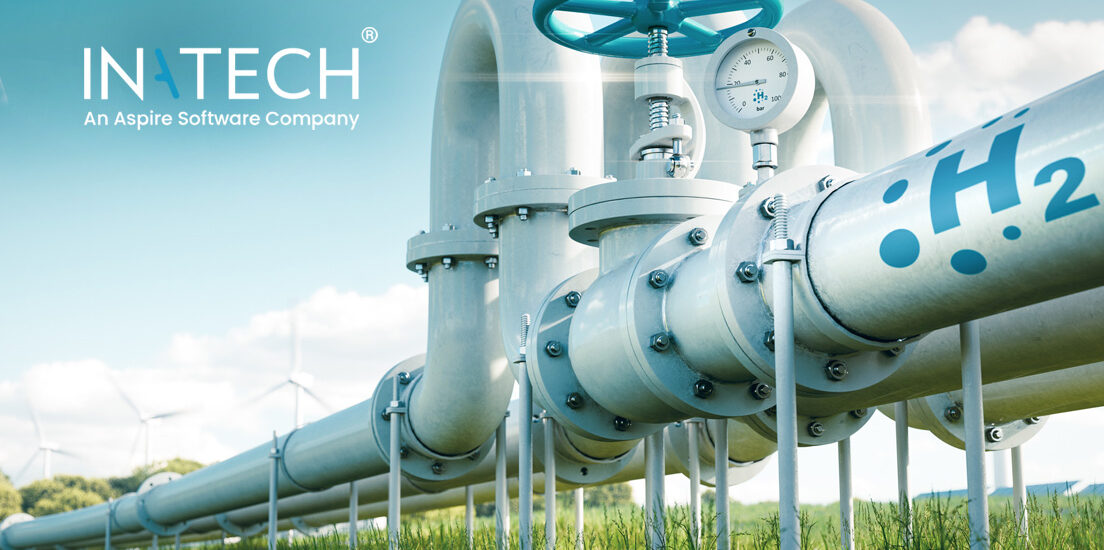Hydrogen is the Most Abundant Element on Earth – But Where Will It All Come From?
- February 7, 2023
- Posted by: Inatech ETRM
- Categories:

With the ever-increasing demand for clean energy solutions, hydrogen has repeatedly been hailed as a fuel of the future. We’ve seen the possibilities explored in the automotive industry with hydrogen vehicles introduced to the market, but setbacks like cost and fossil fuel-reliant infrastructure have prevented them from being adopted on a large scale.
However, automotive manufacturers and manufacturers in other industries have continued experimenting with hydrogen as an alternative fuel source. More time and development could lead to breakthroughs that reshape the landscape of the energy industry.
As governments across the world continue to push for reduced carbon emissions, more resources will be devoted to incorporating renewable fuels, including hydrogen. We’ll most likely see changes first in the more emission heavy areas; steel manufacturing and transportation, which make up a combined 23.4% of global greenhouse gas emissions, are prime examples.
In addition to the push from government and environmentalists, hydrogen’s energy density compared to other fuels and clean by-products encourage researchers to continue finding ways to incorporate it in various processes and products.
Why the Emphasis on Hydrogen?
Our planet is composed of a wide range of elements capable of chemical reactions that generate energy, and hydrogen is the most abundant of those elements, able to fuel our products and industries. But even more significant than that, it does so in a clean manner, emitting water vapor instead of carbon dioxide. It has other appealing aspects which are explored below.
Hydrogen Cell Technology
Since its inception and initial development, hydrogen fuel cell technology has seen massive growth. This is what allows for the storage of hydrogen as an energy source.
The reaction in these fuel cells produces heat and electrical currents with the only by-product being water. This has the potential to reduce emissions significantly, if implemented on a large scale. This technology may also be able to store other renewable forms of energy, like wind and solar, if they can power the reactions that give us hydrogen gas.
Cleaning Dirty Processes
Another point to consider is that hydrogen also has applications outside of directly fuelling vehicles and other machines. Hydrogen can be used to “clean” traditionally “dirty” processes to cut down on carbon and other greenhouse gas emissions.
Other Applications
At the atomic level, hydrogen is stronger than carbon at binding to other elements. When incorporated into combustion reactions, it can combine with burned oxygen to form water and carbon as the remaining by-products. This is another application for hydrogen in industrial processes and another reason why it is one of the top prospects for renewable fuels.
Supply
Most important of all, hydrogen is the most plentiful element on our planet; it makes up water, which is the basis for all living things. When you also take into consideration that water is the by-product of hydrogen fuel, it’s easy to see why it has strong potential as a renewable fuel.
This natural gas is vast in supply, but only if developers can find a sustainable way to produce it. This leads us to one of the main obstacles of implementing hydrogen fuel on a global scale; it mostly exists in combination with other elements.
How Can We Generate Hydrogen for Industrial Use?
Despite being present in the environment and in almost every living thing, hydrogen is most often found combined with oxygen to form water. Pure hydrogen is extremely scarce. Less than 1% of the earth’s atmosphere contains pure hydrogen gas. Thus, manufacturers need to find clean and effective ways to isolate it from other elements and convert it into fuel.
Pulling hydrogen from other parts of the environment also requires finding a sustainable source from which to extract it. Governments and industry leaders are set on continuing down this path, and for good reason. But an important question remains. Where will all the hydrogen come from?
Methane and Steam Reforming
One of the supply options for hydrogen that many look to is methane gas. Methane has a variety of sources that range from natural to man-made and through the process of steam reforming, it can be converted into hydrogen gas.
This approach to hydrogen may be applicable in heavy manufacturing industries and transportation because of the significant portion of carbon emissions they contribute.
However, this process also creates carbon dioxide as a by-product and consumes a lot of energy, which either comes from burning fossil fuels or using large amounts of electric energy. If the energy required to initiate the process makes it redundant, then its value comes into question (the same can be said regarding the push for electric vehicles).
Water Electrolysis
Water electrolysis is another method for generating usable hydrogen gas. The process extracts pure hydrogen from water with a machine called an electrolyser.
Unlike steam reforming, water electrolysis does not produce carbon or carbon-based compounds. It uses electricity to split water into hydrogen and oxygen.
Like steam reforming, the issue with this method is generating enough electricity to initiate the reaction, especially on a large enough scale to produce hydrogen for fuel. Current power sources that can generate enough power for the process produce large amounts of greenhouse gasses. If this is to be a clean process, it will have to be powered by renewables like solar, wind, or nuclear energy.
Despite the current obstacles, this method still shows promise. In fact, electrolyser manufacturing is projected to double within the next decade, showing how viable it can be and how hydrogen may likely emerge as a new force in the industry.
In Conclusion
While hydrogen is everywhere, it usually occurs in combination with other elements, such as oxygen. The challenge lies in finding a sustainable way to isolate it. Regardless, hydrogen is a promising candidate for replacing fossil fuels in future.
As more resources are allocated to finding renewable solutions, renewable and carbon emission trading will continue to change and shift. To keep up, you’ll want an ETRM system that factors in all the emerging renewables.
Inatech is a leading provider of cloud-based Commodity and Energy Trading Risk Management software. Our ETRM platform can help risk managers navigate the ever-changing landscape with advanced analytics and data tools. It supports oil and gas trading, and we also have a dedicated renewable fuel ETRM. Contact us to book a demo and see how our software can enhance your trading operations.




